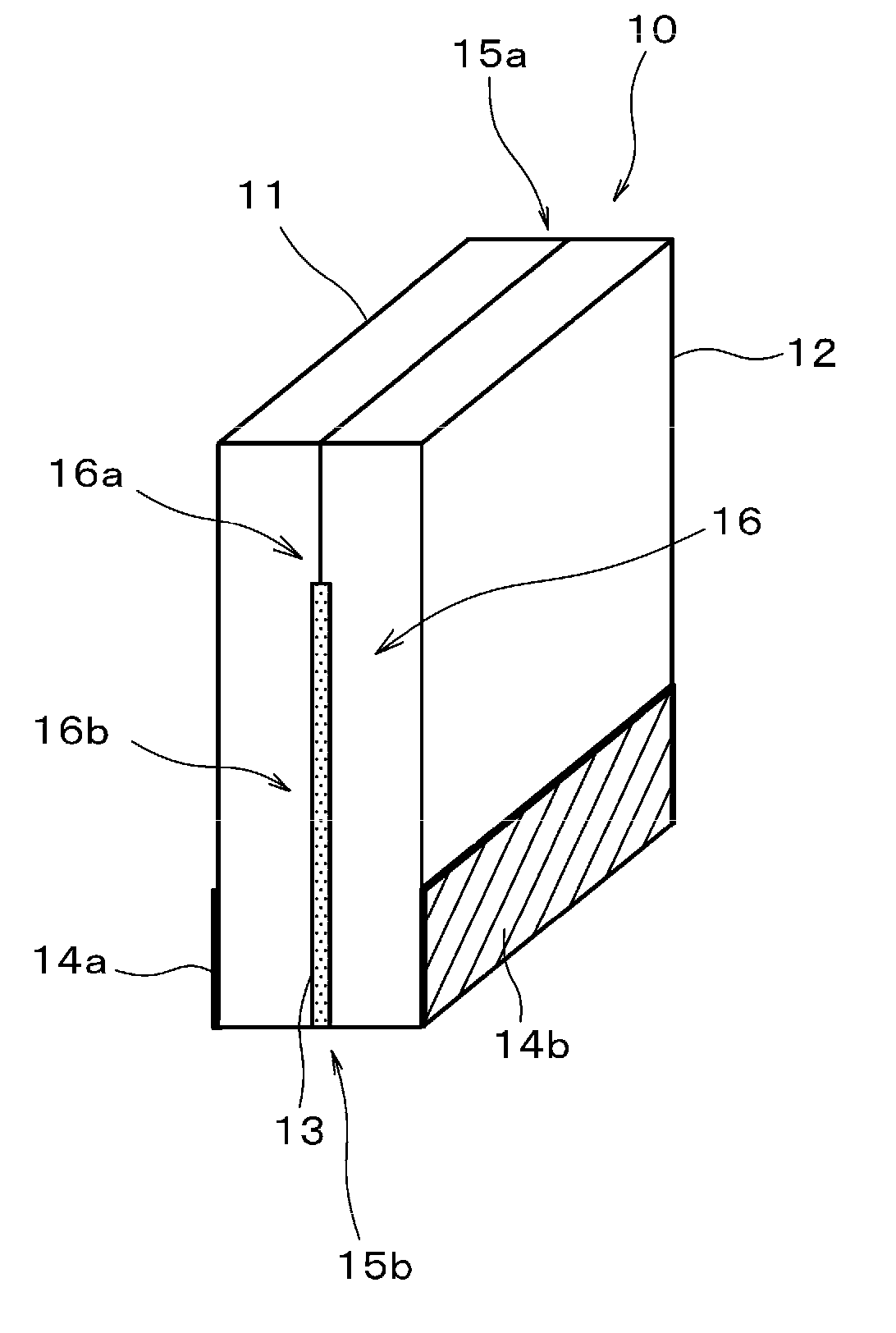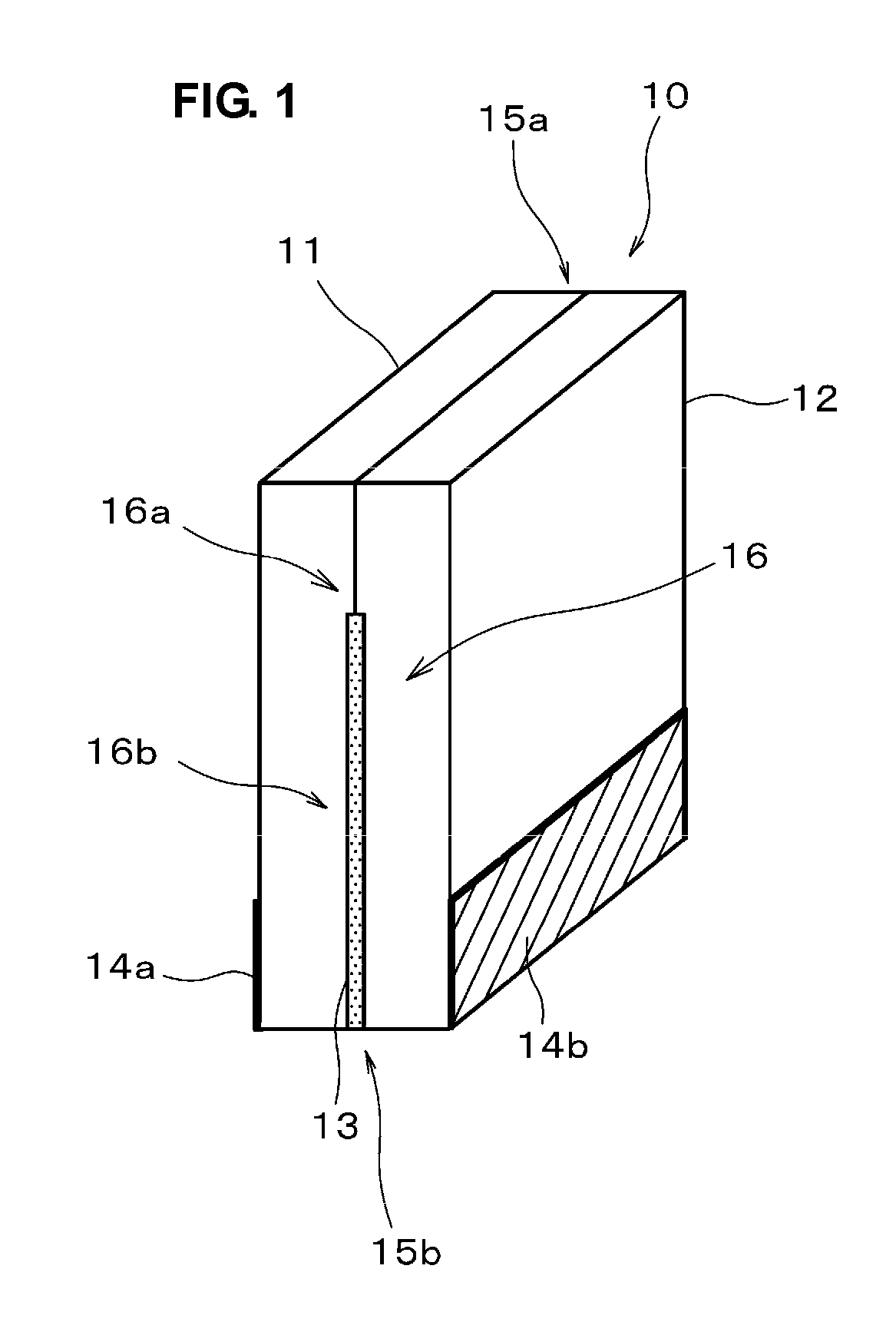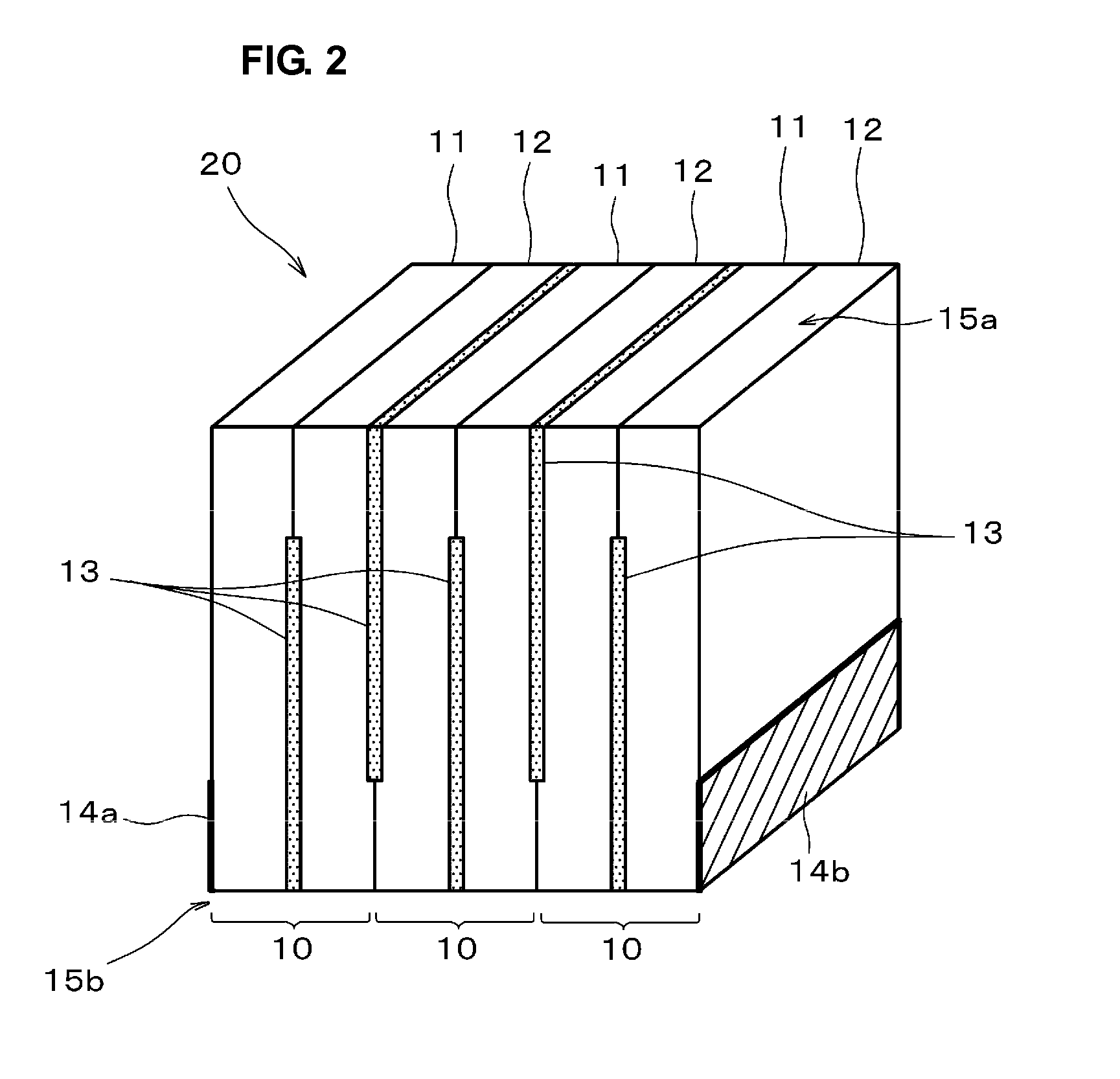Thermoelectric conversion element, thermoelectric conversion module, method for producing thermoelectric conversion element
- Summary
- Abstract
- Description
- Claims
- Application Information
AI Technical Summary
Benefits of technology
Problems solved by technology
Method used
Image
Examples
first preferred embodiment
[0051]FIG. 1 shows a thermoelectric conversion element 10 according to a first preferred embodiment of the present invention. As shown in FIG. 1, the thermoelectric conversion element 10 according to the first preferred embodiment includes a p-type thermoelectric conversion material 11 (hereinafter, referred to as a “p-type oxide thermoelectric conversion material”) preferably primarily made of an oxide, for example, and an n-type thermoelectric conversion material 12 (hereinafter, referred to as an “n-type oxide thermoelectric conversion material”) preferably primarily composed of an oxide, for example.
[0052]In the thermoelectric conversion element 10 according to the first preferred embodiment, the p-type oxide thermoelectric conversion material 11 is directly bonded to the n-type oxide thermoelectric conversion material 12 without an electrode or other element provided therebetween in one region 16a of the junction surface 16 between the p-type oxide thermoelectric conversion mat...
second preferred embodiment
[0083]FIG. 2 shows a schematic structure of a thermoelectric conversion module according to a second preferred embodiment of the present invention.
[0084]A thermoelectric conversion module 20 according to the second preferred embodiment includes a plurality of bonded thermoelectric conversion elements 10 each having one p-type oxide thermoelectric conversion material 11 and one n-type oxide thermoelectric conversion material 12 and first and second electrodes 14a and 14b arranged at lower portions (lower-temperature-side junctions) 15b of both ends thereof.
[0085]FIG. 2 shows a structure including three thermoelectric conversion elements 10 each having a pair of the p-type oxide thermoelectric conversion material 11 and the n-type oxide thermoelectric conversion material 12. However, the number of the thermoelectric conversion elements 10 defining the thermoelectric conversion module 20 is not particularly limited.
[0086]Each of the thermoelectric conversion elements 10 used in the the...
examples
[0090]Examples of preferred embodiments of the present invention will be described below.
[0091]Here, an insulating material to be interposed between a p-type thermoelectric conversion material and an n-type thermoelectric conversion material was first studied when producing a thermoelectric conversion module according to an example of a preferred embodiment of the present invention.
[0092]Specifically, glass A, glass B, glass C, glass D, glass E, and glass F, having different softening points, shown in Table 1 below were prepared. Thermoelectric conversion modules were produced using materials each including one of the glasses and an oxide (forsterite (Mg2SiO4) powder, for example) as insulating materials. The effect of the softening point of the glass and the optimum ratio of the glass powder to the forsterite powder were studied.
Effect of Softening Point of Glass
[0093]Thermoelectric conversion materials and insulating materials described below were prepared.
[0094](a) p-type thermoe...
PUM
| Property | Measurement | Unit |
|---|---|---|
| Softening point | aaaaa | aaaaa |
| Softening point | aaaaa | aaaaa |
| Temperature | aaaaa | aaaaa |
Abstract
Description
Claims
Application Information
 Login to View More
Login to View More - R&D
- Intellectual Property
- Life Sciences
- Materials
- Tech Scout
- Unparalleled Data Quality
- Higher Quality Content
- 60% Fewer Hallucinations
Browse by: Latest US Patents, China's latest patents, Technical Efficacy Thesaurus, Application Domain, Technology Topic, Popular Technical Reports.
© 2025 PatSnap. All rights reserved.Legal|Privacy policy|Modern Slavery Act Transparency Statement|Sitemap|About US| Contact US: help@patsnap.com



